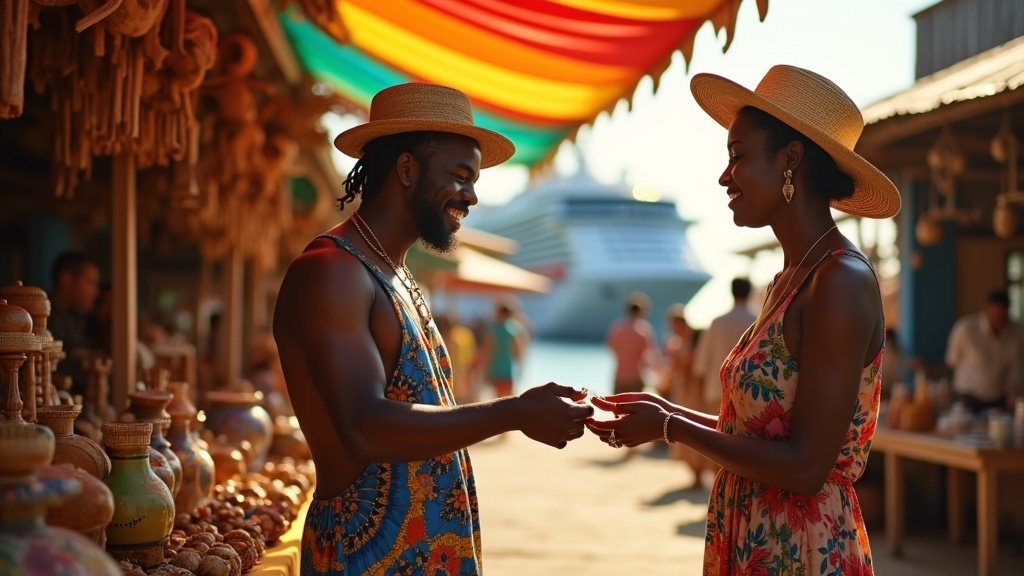Jamaica is significantly amplifying its focus on the cruise tourism sector, aiming to attract a projected 1.34 million passengers in 2025 and ensuring that the economic benefits of this booming industry extend deeper into local communities. This intensified strategy, championed by Minister of Tourism Edmund Bartlett, seeks to leverage Jamaica’s appeal as a premier Caribbean destination while simultaneously fostering sustainable growth and maximizing local participation.
Projected Growth and Economic Impact
Tourism officials anticipate a 7% increase in cruise passenger arrivals for 2025, reaching an estimated 1.34 million visitors. This growth is a testament to the sector’s strong rebound post-COVID-19, exceeding expectations in many areas. Cruise tourism is a vital economic contributor, known for its high “dollar convertibility,” meaning passenger spending quickly circulates into the hands of local vendors, artisans, and small business owners. In the 2023/2024 season alone, cruise tourism generated approximately US$197.8 million. The government’s objective is clear: to ensure that this wealth not only flows but is retained within Jamaica, fostering a more equitable economy. This approach is crucial for the island’s economic resilience, with cruise tourism having previously contributed significantly, earning an average of US$174.5 million annually before the pandemic.
Investing in Port Infrastructure and Visitor Experience
To accommodate the growing number of arrivals and enhance the visitor journey, Jamaica has been undertaking continuous upgrades across its four main cruise ports: Montego Bay, Ocho Rios, Falmouth, and Port Antonio. The Falmouth Cruise Port, developed through a public-private partnership, stands out as one of the most modern cruise terminals in the Caribbean, equipped to host some of the world’s largest ships. These port enhancements are part of a broader effort to deliver world-class experiences that connect visitors with Jamaica’s rich culture, history, and natural beauty. Future plans also include potentially bringing cruise business back to Port Royal.
A cornerstone of the strategy to enrich the visitor experience and spread economic benefits is the development of initiatives like the Falmouth Artisan Village. Located near the Falmouth cruise pier, this facility houses numerous shops featuring unique products crafted by local artisans, alongside immersive cultural, culinary, and entertainment experiences. Efforts are underway to further strengthen its marketing and ensure consistent foot traffic, recognizing its potential to generate significant economic impact if even a small percentage of cruise visitors engage with it. This aligns with the broader “Local First” strategy, aiming to ensure that Jamaican businesses and individuals are at the forefront of the supply side of tourism.
Strategic Vision and Addressing Challenges
Jamaica’s strategic vision extends to expanding its port network to facilitate unique Jamaican itineraries and improving the quality of shore excursions, emphasizing safety, security, and seamless experiences for visitors. The island is also exploring opportunities to attract high-end yacht operators and discussing potential larger strategic partnerships and infrastructure investments with major cruise lines like MSC Cruises. While cruise tourism faces global challenges such as emissions regulations and environmental concerns, Jamaica is navigating these carefully. Regional developments, like the rejection of a port development plan in the Cayman Islands, can also influence Caribbean itineraries, highlighting the need for adaptable planning.
Industry Partnerships and Global Standing
The island maintains robust itineraries and strong relationships with major cruise lines, including Royal Caribbean, Carnival, MSC, and Norwegian. The early and robust start to the 2024/2025 cruise season, marked by historic double inaugurations in Falmouth, underscores Jamaica’s resilience and appeal. With passenger numbers matching pre-pandemic records, Jamaica continues to solidify its position as a must-visit destination, demonstrating a commitment to sustainable growth that benefits both the industry and the nation.
Conclusion
Jamaica’s concerted push in cruise tourism signifies a strategic endeavor to not only increase visitor arrivals but also to ensure a more inclusive and impactful economic outcome for its people. Through infrastructure development, enhanced visitor experiences, and strong industry partnerships, Jamaica is poised to further solidify its reputation as a leading and dynamic cruise destination in the Caribbean and beyond.

